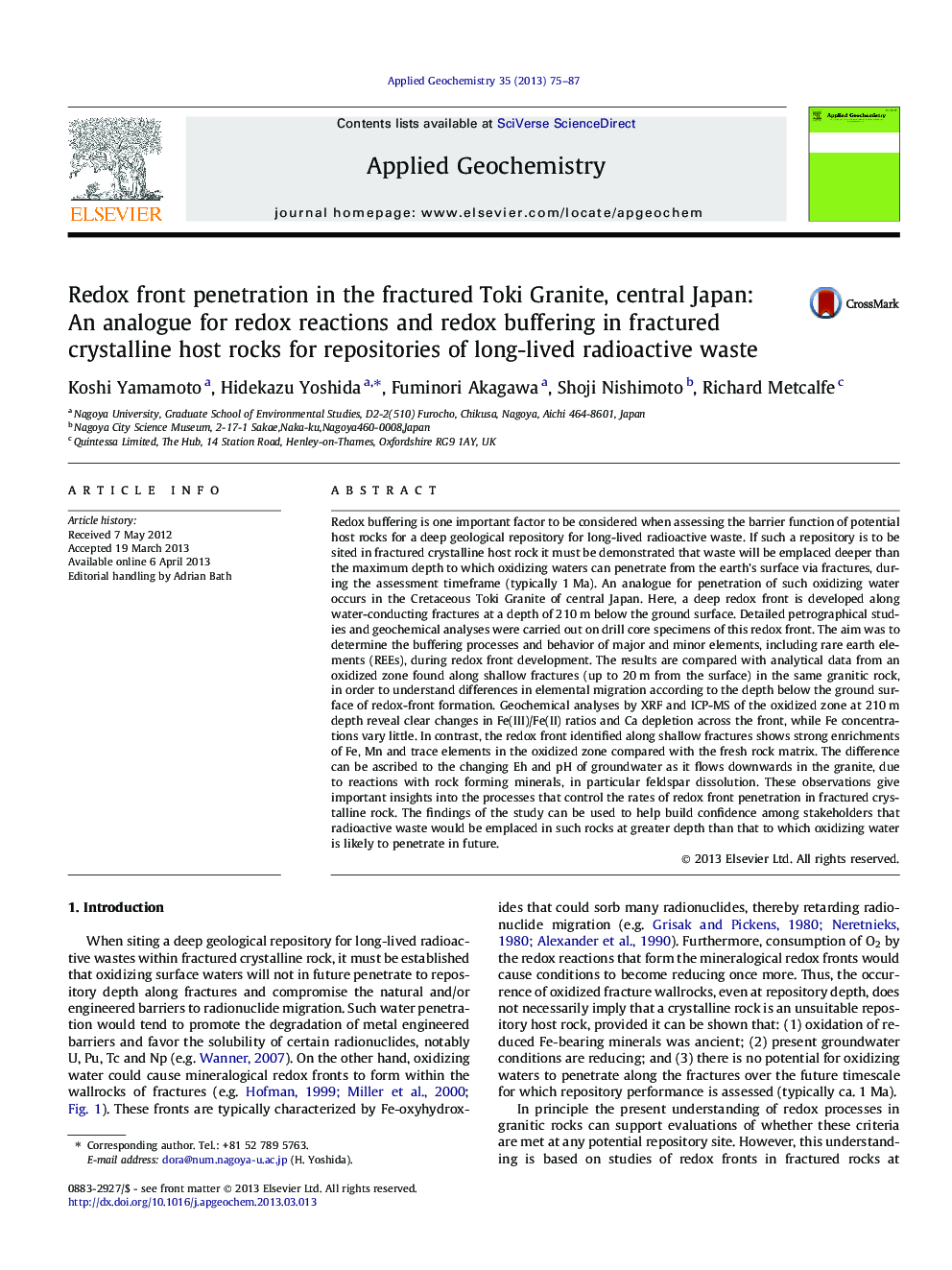| کد مقاله | کد نشریه | سال انتشار | مقاله انگلیسی | نسخه تمام متن |
|---|---|---|---|---|
| 6335337 | 1620256 | 2013 | 13 صفحه PDF | دانلود رایگان |
عنوان انگلیسی مقاله ISI
Redox front penetration in the fractured Toki Granite, central Japan: An analogue for redox reactions and redox buffering in fractured crystalline host rocks for repositories of long-lived radioactive waste
ترجمه فارسی عنوان
نفوذ روبرو به جلو در توده گرانیت شکسته شده، مرکزی ژاپن: یک آنالوگ برای واکنش های بازسازی واکسیناسیون و بافر ردکس در سنگ های میزبان کریستالی شکسته برای مخازن زباله های رادیواکتیو طولانی مدت
دانلود مقاله + سفارش ترجمه
دانلود مقاله ISI انگلیسی
رایگان برای ایرانیان
موضوعات مرتبط
مهندسی و علوم پایه
علوم زمین و سیارات
ژئوشیمی و پترولوژی
چکیده انگلیسی
Redox buffering is one important factor to be considered when assessing the barrier function of potential host rocks for a deep geological repository for long-lived radioactive waste. If such a repository is to be sited in fractured crystalline host rock it must be demonstrated that waste will be emplaced deeper than the maximum depth to which oxidizing waters can penetrate from the earth's surface via fractures, during the assessment timeframe (typically 1Â Ma). An analogue for penetration of such oxidizing water occurs in the Cretaceous Toki Granite of central Japan. Here, a deep redox front is developed along water-conducting fractures at a depth of 210Â m below the ground surface. Detailed petrographical studies and geochemical analyses were carried out on drill core specimens of this redox front. The aim was to determine the buffering processes and behavior of major and minor elements, including rare earth elements (REEs), during redox front development. The results are compared with analytical data from an oxidized zone found along shallow fractures (up to 20Â m from the surface) in the same granitic rock, in order to understand differences in elemental migration according to the depth below the ground surface of redox-front formation. Geochemical analyses by XRF and ICP-MS of the oxidized zone at 210Â m depth reveal clear changes in Fe(III)/Fe(II) ratios and Ca depletion across the front, while Fe concentrations vary little. In contrast, the redox front identified along shallow fractures shows strong enrichments of Fe, Mn and trace elements in the oxidized zone compared with the fresh rock matrix. The difference can be ascribed to the changing Eh and pH of groundwater as it flows downwards in the granite, due to reactions with rock forming minerals, in particular feldspar dissolution. These observations give important insights into the processes that control the rates of redox front penetration in fractured crystalline rock. The findings of the study can be used to help build confidence among stakeholders that radioactive waste would be emplaced in such rocks at greater depth than that to which oxidizing water is likely to penetrate in future.
ناشر
Database: Elsevier - ScienceDirect (ساینس دایرکت)
Journal: Applied Geochemistry - Volume 35, August 2013, Pages 75-87
Journal: Applied Geochemistry - Volume 35, August 2013, Pages 75-87
نویسندگان
Koshi Yamamoto, Hidekazu Yoshida, Fuminori Akagawa, Shoji Nishimoto, Richard Metcalfe,
